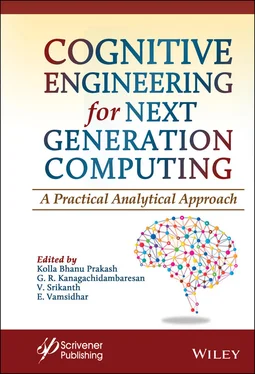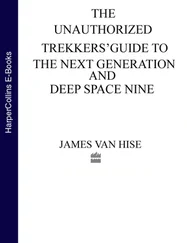1 Cover
2 Title Page
3 Copyright
4 Dedication
5 Preface
6 Acknowledgments
7 1 Introduction to Cognitive Computing 1.1 Introduction: Definition of Cognition, Cognitive Computing 1.2 Defining and Understanding Cognitive Computing 1.3 Cognitive Computing Evolution and Importance 1.4 Difference Between Cognitive Computing and Artificial Intelligence 1.5 The Elements of a Cognitive System 1.6 Ingesting Data Into Cognitive System 1.7 Analytics Services 1.8 Machine Learning 1.9 Machine Learning Process 1.10 Machine Learning Techniques 1.11 Hypothesis Space 1.12 Developing a Cognitive Computing Application 1.13 Building a Health Care Application 1.14 Advantages of Cognitive Computing 1.15 Features of Cognitive Computing 1.16 Limitations of Cognitive Computing 1.17 Conclusion References
8 2 Machine Learning and Big Data in Cyber-Physical System: Methods, Applications and Challenges 2.1 Introduction 2.2 Cyber-Physical System Architecture 2.3 Human-in-the-Loop Cyber-Physical Systems (HiLCPS) 2.4 Machine Learning Applications in CPS 2.5 Use of IoT in CPS 2.6 Use of Big Data in CPS 2.7 Critical Analysis 2.8 Conclusion References
9 3 HemoSmart: A Non-Invasive Device and Mobile App for Anemia Detection 3.1 Introduction 3.2 Literature Review 3.3 Methodology 3.4 Results 3.5 Discussion 3.6 Originality and Innovativeness of the Research 3.7 Conclusion References
10 4 Advanced Cognitive Models and Algorithms 4.1 Introduction 4.2 Microsoft Azure Cognitive Model 4.3 IBM Watson Cognitive Analytics 4.4 Natural Language Modeling 4.5 Representation of Knowledge Models 4.6 Conclusion References
11 5 iParking—Smart Way to Automate the Management of the Parking System for a Smart City 5.1 Introduction 5.2 Background & Literature Review 5.3 Research Gap 5.4 Research Problem 5.5 Objectives 5.6 Methodology 5.7 Testing and Evaluation 5.8 Results 5.9 Discussion 5.10 Conclusion References
12 6 Cognitive Cyber-Physical System Applications 6.1 Introduction 6.2 Properties of Cognitive Cyber-Physical System 6.3 Components of Cognitive Cyber-Physical System 6.4 Relationship Between Cyber-Physical System for Human–Robot 6.5 Applications of Cognitive Cyber-Physical System 6.6 Case Study: Road Management System Using CPS 6.7 Conclusion References
13 7 Cognitive Computing 7.1 Introduction 7.2 Evolution of Cognitive System 7.3 Cognitive Computing Architecture 7.4 Enabling Technologies in Cognitive Computing 7.5 Applications of Cognitive Computing 7.6 Future of Cognitive Computing 7.7 Conclusion References
14 8 Tools Used for Research in Cognitive Engineering and Cyber Physical Systems 8.1 Cyber Physical Systems 8.2 Introduction: The Four Phases of Industrial Revolution 8.3 System 8.4 Autonomous Automobile System 8.5 Robotic System 8.6 Mechatronics References
15 9 Role of Recent Technologies in Cognitive Systems 9.1 Introduction 9.2 Natural Language Processing for Cognitive Systems 9.3 Taxonomies and Ontologies of Knowledge Representation for Cognitive Systems 9.4 Support of Cloud Computing for Cognitive Systems 9.5 Cognitive Analytics for Automatic Fraud Detection Using Machine Learning and Fuzzy Systems 9.6 Design of Cognitive System for Healthcare Monitoring in Detecting Diseases 9.7 Advanced High Standard Applications Using Cognitive Computing 9.8 Conclusion References
16 10 Quantum Meta-Heuristics and Applications 10.1 Introduction 10.2 What is Quantum Computing? 10.3 Quantum Computing Challenges 10.4 Meta-Heuristics and Quantum Meta-Heuristics Solution Approaches 10.5 Quantum Meta-Heuristics Algorithms With Application Areas References
17 11 Ensuring Security and Privacy in IoT for Healthcare Applications 11.1 Introduction 11.2 Need of IoT in Healthcare 11.3 Literature Survey on an IoT-Aware Architecture for Smart Healthcare Systems 11.4 IoT in Healthcare: Challenges and Issues 11.5 Proposed System: 6LoWPAN and COAP Protocol-Based IoT System for Medical Data Transfer by Preserving Privacy of Patient 11.6 Conclusion References
18 12 Empowering Secured Outsourcing in Cloud Storage Through Data Integrity Verification 12.1 Introduction 12.2 Literature Survey 12.3 System Design 12.4 Implementation and Result Discussion 12.5 Performance 12.6 Conclusion References
19 Index
20 End User License Agreement
1 Chapter 1 Figure 1.1 Human-centered cognitive cycle. Figure 1.2 Intuitive thinking and analysis [11]. Figure 1.3 Showing the evolution of Cognitive Computing [13]. Figure 1.4 Global cognitive market [17]. Figure 1.5 Global cognitive market revenue, by geography [17]. Figure 1.6 The general design of a cognitive system [11]. Figure 1.7 Figure showing the convergence of technologies. Figure 1.8 Machine learning. Figure 1.9 Supervised model. Figure 1.10 Reinforcement learning. Figure 1.11 Hypotheses generation IBM Watson. Figure 1.12 Healthcare ecosystem. Figure 1.13 Welltok training architecture [11]. Figure 1.14 Content acquisition.
2 Chapter 2 Figure 2.1 Cyber-physical system architecture. Figure 2.2 Integration of ML with HiLCPS.Figure 2.3 Machine learning algorithms with CPS.Figure 2.4 Number of publications for ML, IoT, and Big-Data with year wise.Figure 2.5 Number of machine learning algorithms proposed with CPS.Figure 2.6 Distinguish approaches with CPS.Figure 2.7 Applications of ML with CPS.Figure 2.8 Applications of ML, IoT and Big data with CPS.Figure 2.9 K-NN evaluation factors.Figure 2.10 SVM evaluation factors.Figure 2.11 RF evaluation factors.Figure 2.12 DT evaluation factors.Figure 2.13 MLP evaluation factors.Figure 2.14 NB evaluation factors.Figure 2.15 LR evaluation factors.Figure 2.16 Big Data evaluation factors.Figure 2.17 IoT evaluation factors.
3 Chapter 3Figure 3.1 Conceptual Design of lighting system and camera position.Figure 3.2 Thumb tip inserting part.Figure 3.3 Completed prototype.Figure 3.4 Proposed methodology.Figure 3.5 Procedure of supervised machine learning.Figure 3.6 With a green LED.Figure 3.7 With a yellow LED.Figure 3.8 With an orange LED.Figure 3.9 With a blue LED.Figure 3.10 With a red LED.Figure 3.11 With a white super bright LED.Figure 3.12 Flow chart of convolutional neural network.
4 Chapter 4Figure 4.1 AI services-based Microsoft Interface.Figure 4.2 Incorporating AI services into Microsoft Azure.Figure 4.3 IBM Watson technology.Figure 4.4 Evolution of computing towards cognitive.Figure 4.5 NLG/NLU subset of NLP.Figure 4.6 Natural language processing.Figure 4.7 Knowledge representation design.
5 Chapter 5Figure 5.1 Analyzing efficiency in parking [16].Figure 5.2 Different parking models presentation [2].Figure 5.3 Preprocess the input frame and generate detecting patches [13].Figure 5.4 System diagram.Figure 5.5 Steps of usability testing.
6 Chapter 6Figure 6.1 Components of Smart Factory.Figure 6.2 Relationship between cyber and physical layer integration.Figure 6.3 Transport system using CPS components.Figure 6.4 CPS Industrial interface.Figure 6.5 ECG Connection Interface using CPS.Figure 6.6 Clinical infrastructure using CPS.Figure 6.7 Agriculture interface using CPS.Figure 6.8 Road management using CPS.
7 Chapter 7Figure 7.1 Evolution of cognitive computing [6].Figure 7.2 The system architecture of cognitive computing.Figure 7.3 Perceptual and rational method to recognize a square. (a) Rational me...
8 Chapter 9Figure 9.1 Layered Architecture of Cognitive Computing [2].Figure 9.2 Taxonomy of Text Media.Figure 9.3 Knowledge Representation of data for Tic-Tac-Toe game along with rule...Figure 9.4(a) Washing Machine Diagnostics & Repair when is doesn’t Drain.Figure 9.4(b) Washing Machine Diagnostics & Repair when is doesn’t Spin.Figure 9.4(c) Washing Machine Diagnostics & Repair when Water Flow is Slow.
9 Chapter 10Figure 10.1 Bloch Sphere which represents the Q-bit.Figure 10.2 Basic meta-heuristics solution approach.Figure 10.3 Quantum meta-heuristics solution approach.Figure 10.4 Quantum inspired meta-heuristic methods.Figure 10.5 Basic quantum meta-heuristics genetic evolution approach for image s...Figure 10.6 Airside specific operations & implementations with quantum meta-heur...
Читать дальше












